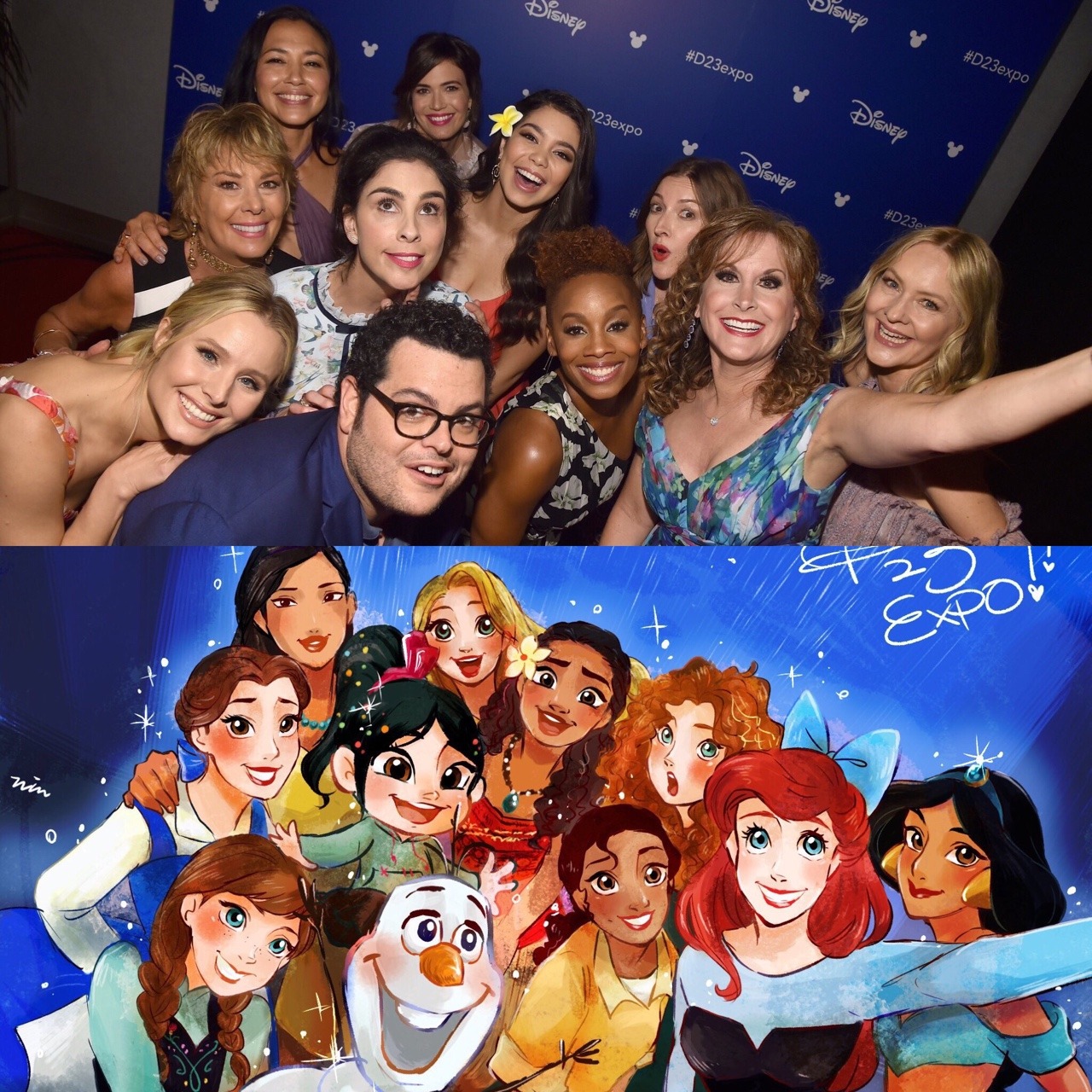
oh-that-disney-princess-emily:
Someone did the thing 😭😭😭
Why is jasmine white? I am concerned?…
The same reason Sarah Silverman isn’t an 11 year old or why Robin Williams wasn’t blue: VOICE ACTING.
Disney usually makes an effort to cast people of the appropriate ethnic background as voice actors, so this is actually remarkable. (Note that Tiana’s voice actress is black, Moana’s is a Pacific Islander, and Pocahontas’s is Native American.) Most of the Aladdin voice actors are white, though, and I’m not sure why; I think Middle Eastern people being parsed as nonwhite is relatively new (post-9/11)?
…I would very much assume that this boils down to “Disney does precisely what it must do to keep the mainstream happy, and character/actor ethnic matching became a thing that [certain vocal portions of] the mainstream cared about in the late 2000s, not during the height of the Disney Renaissance.”
Pocahontas came out in 1995 and has a mostly Native American cast; Mulan (1998) also uses Asian voice actors for Asian roles, with the notable exception of Harvey Fierstein, which is obviously because Harvey Fierstein is going to have a part in any Disney movie about drag.
It is possible that something happened between 1992 and 1995 (or possibly 1994 and 1995, depending on whether you view “they’re all lions” as a reasonable explanation for why the voice actors in The Lion King are white). Presumably this is not time-traveling social shame from fifteen years in the future. But it might very well be “Pocahontas is the first Disney movie they got sensitivity consultants for” (which AFAIK is true)– although that also might be caused by native Americans being perceived as a racial minority and Arab Americans not being so perceived.
The Emperor’s New Groove (2000) has David Spade as an Incan emperor. Lilo & Stitch (2002) has the extremely white Daveigh Chase as Lilo (native Hawaiian and very PoC-coded).
And, uh, whatever its cast may look like, Pocahontas definitely does not feel like a movie designed around modern-style identity sensitivities. Which is relevant. Same goes for Mulan, for that matter (“dishonor on you, dishonor on your cow…”).
I don’t claim to know exactly what the Disney movers-and-shakers have had in mind with their various projects, including with the casting for Pocahontas and Mulan. But I’d bet money that The Princess and the Frog ushered in a new era of being-extremely-careful-with-SJ-issues.
Lilo and Stitch has two of its three major Hawaiian characters voiced by Hawaiian actors, and also casts a black man as the voice actor of a black character. This is a much closer match than you would get if you were not concerned about it at all, (the aliens in the same movie are almost all white) and it seems to me that Lilo’s casting is likely caused by the difficulty of finding Hawaiian actors.
Emperor’s New Groove was only Incan so they weren’t wasting the footage from Kingdom of the Sun; I suspect Disney figured (rightly) that it would not occur to anyone that Cuzco was Native American.
If Pocahontas and Mulan don’t look like they’re designed around modern identity sensitivities, then perhaps you shouldn’t use modern identity sensitivities as the explanation for why Disney has been behaving the same way for the past twenty years.
Hard to see how “it would not occur to anyone that Cuzco was Native American.”
…that said, I mostly cede the point, I suspect you’re right about this overall. I do think that there has been a major tonal/content shift in Disney movies since 2009, which maps pretty nicely to shifting public opinion – and I suspect that they’ve been, uh, somewhat more consistent and more rigorous about racial casting policy since then – but given your data, the casting stuff probably mostly has its roots in earlier decisions, whatever they were.